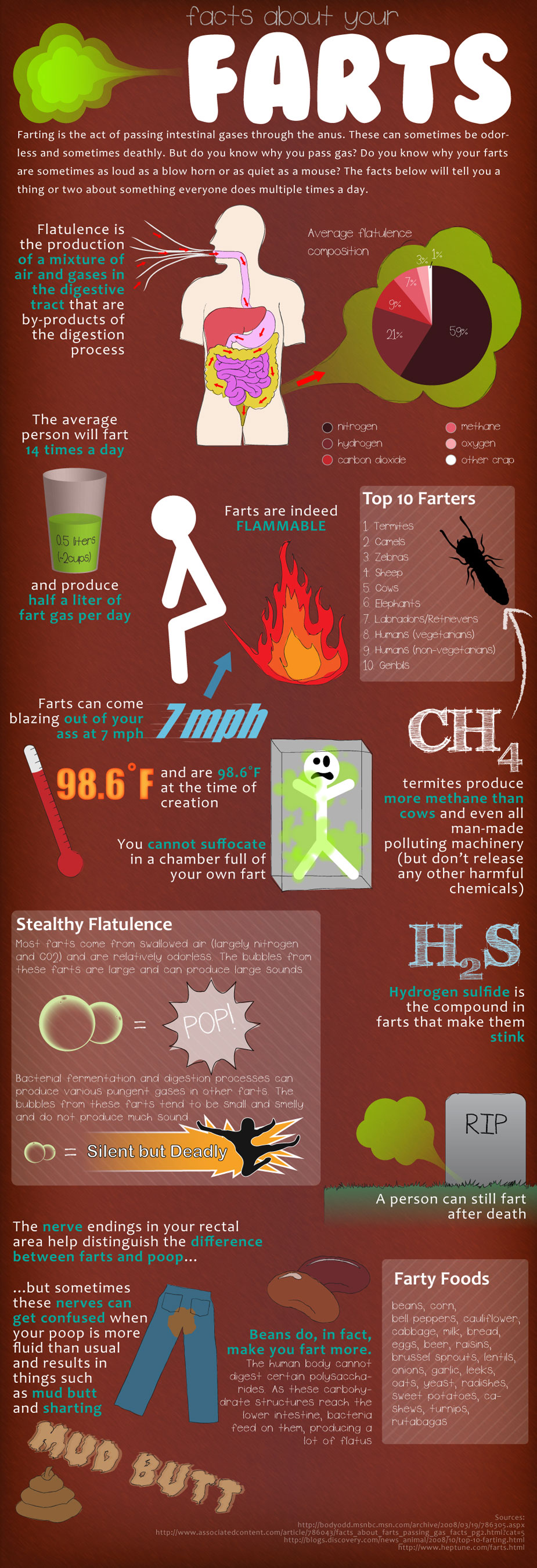Joke Of The Day: Irish Soup
What Makes Us Fart?
More useful knowledge from Life’s Little Mysteries.
The answer may stink, but eating or drinking anything gives us gas. In fact, it’s normal to fart up to half of a gallon (1.9 liters), or about 15 to 20 toots worth of gas, each day.
When we gulp down food, air comes with it. So if a belch seems rude, remember that the air has to leave our bodies one way or another.
Fragrant flatulence, however, comes from colonies of bacteria shacked up inside our lower intestinal tract (which is why it can take hours for gas to kick in after a meal). In the process of converting our meals into useful nutrients, these food-munching microbes produce a smelly by-product of hydrogen sulfide gas — the same stench that emanates from rotten eggs.
Although the gaseous response of bacteria to food differs from person to person (as every one has a unique collection of their own), the biggest gas-generating ingredients are sugars, especially the following four:
- Fructose — A natural ingredient in plants like onions, corn, wheat and even pears. It’s often concentrated into a sugary syrup for soft drinks and fruit drinks.
- Lactose — Milk’s sweet natural ingredient, also added to foods like bread and cereal. Some people are born with low levels of lactase, the enzyme that breaks down lactose, a fact that inflates their gassy susceptibility.
- Raffinose — The secret gassy ingredient in beans, which is also found in broccoli, cauliflower, cabbage, asparagus and other vegetables. Products like Beano, designed to reduce gas production, break down the sugar before it can reach eager intestinal bacteria.
- Sorbitol — Found in almost all fruits, this indigestible sugar is also used as an artificial sweetener in “diet” and sugar-free foods. Yes, sugar-free gum, candy, soda and anything else deceptively sweet can cause gas.
Other fart-forming ingredients include fiber and starches found in foods like corn, potatoes and wheat. While fats and protein don’t cause gas, they can make a meal take longer to digest — and give bacteria more time to generate gas from other ingredients.
Just about the only food that doesn’t give us gas? Rice.
Fighting flatulence takes trial and error to figure out which foods excite your intestinal friends and cutting back on them. As a general rule, taking anti-gas products like alpha-galactosidase (Beano) or lactase enzyme (Lactaid) with problematic foods can curb some flatulence — simethicone (Gas-X) only helps relieve bloating by passing gas faster.
Chronic irritating or painful gas may signal something serious, however, so seeing a gastrointestinal specialist is a good idea if this is the case.



